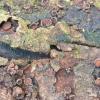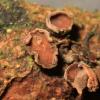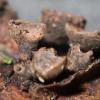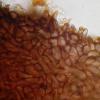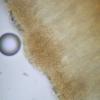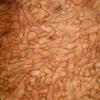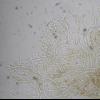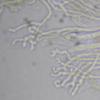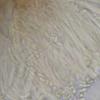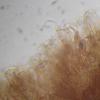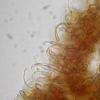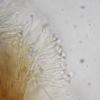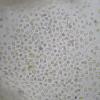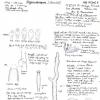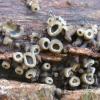
29-12-2025 17:44
Isabelle CharissouBonjour,J'aimerais savoir si d'autres personnes au

29-12-2025 17:12
 Bernard CLESSE
Bernard CLESSE
Bonjour à toutes et tous,Pourriez-vous m'aider à

12-11-2021 00:03
Lepista ZacariasHi everybody,A week ago in my fiels trip I noticed

29-12-2025 17:01
Gernot FriebesHi,I'm looking for help with this hyphomycete with

29-12-2025 08:30
Hello.A tiny ascomycete sprouting under Juniperus

29-12-2025 10:15
Hulda Caroline HolteHello, I found and collected this propoloid ascom

29-12-2025 09:38
Oskari VirtanenHi,could anyone help me identify this, I suspect P

28-12-2025 12:08
Margot en Geert VullingsThis possible Karstenia was found on the bark of d
I would appreciate any advice on the identity of the following discomycete on Populus deadwood:
Ascomata brown, about 1-2 mm in diameter, margin bent inwards, fleshy, with a short and stout stipe.
Microscopy: Spores ellipsoid, hyaline, 4.5-5.5 x 2 µm, with two large oildrops. Asci narrow, with a long slender stipe, about 50-60 x 3.5-4 µm, no apical apparatus visible, J-. Paraphyses 1-1.5 µm diameter, knobby, bent, coiled and often with short side branches, forming a very dense and coherent layer. Excipulum formed of brown, thick walled, round to elongated or slightly polygonal cells. End cells with short broad spiny ends. Fore more details see photos.
Thank you for any help.
Stefan

looks much like an Unguiculariopsis. Perhaps you can try a section through the margin? or a squash mount of it, to show perhaps hooked hairs? On your 4th pic short conical hairs can be seen, I assume at the flanks. Also I wonder about the paraphyses: on your last pic they are quite normal, straight and unbranched.
Zotto
Thanks for the fast answer. I did a cut through the whole apothecium, but did not see any longer hairs. However, many ascomata are in a bad condition, especially at the margin. I will try again this evening. As you can see in Pic5, there is a very dense layer of agglutinated paraphyses on top of the hymenium and in the last pic, this layer is "squeezed" away. I did a fast run through Unguiculariopsis and there is a U. acerina where the Spores would fit.
Thanks a lot
Stefan
Stefan

Deltosperma is very rare, i saw it once...
And Unguiculariopsis is one of the craziest genera...
But such large apos are a rare case.
Zotto
What do you mean with crazy? The type of anamorph? Or that it is difficult to name species? And what do you think of the special paraphyses? It is not usual to have branched ones in the Genus, or is it?
Stefan

Paraphyses: when I look through my drawings I see only unbranched straight paraphyses, therefore I was so sceptical. I think also Zhuang figures only apically unbranched ones.
Perhaps you can investigate them once more, those branched paraphyses are not accompanied with asci on your pics, why?
Zotto
Thanks a lot. I will receive hopefully better Material from the collector tonight. Then I will do a reinvestigation. I think the Substratum (Eutypa) could be the best hint for identification.
Stefan
I reinvestigated the hymenium of the younger ascomata and could not recover the ominous branched paraphyses. However I did indeed find a Deltosperma anamorph (See Photos). Now I think I will name this collection Unguiculariopsis parasitica (Fckl.) Zhuang. One thing is, however, that my spores are only up to 6/6.5 long and usually only 2.5 broad which is considerably smaller than 6-8 x 3-4 in Zhuang.
Stefan

The one I saw Deltosperma was U. viburnicola. Here the spores I found similar as yours: 3.8-5.8 x 2-2.6 µm.
From which area you collected your fungus?
Zottto
Stefan

One should publish an article every day in order to get ready... :-(
Zotto

